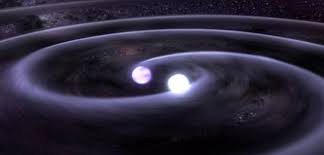“Cosmic Seigniorage” Underscores Scarcity of Gold
One of the many features of gold that makes it desirable as a currency, according to AIER founder Edward C. Harwood (and listed in his biography by Katy Delay) is that “no one has yet found a cheap way to manufacture it.” And today we found out just how true that statement is—astronomers have announced findings that confirm the process by which gold is created, and it is, to put it in the most scientific terms, absolutely bonkers.
When stars larger than our sun run out of fuel, they die in a supernova explosion of unimaginable power, leaving behind a neutron star. Neutron stars can be as small as Manhattan, but contain as much mass as the sun. When two of those neutron starts collide, creating an event powerful enough to warp the fabric of space and time, heavy elements such as gold are created. Such an event, 130 million light years away, was observed by collaborating researchers from the U.S. and Italy.
For hundreds of years, alchemists, including esteemed scientists like Isaac Newton, doggedly pursued a way to make gold. It turns out that all they needed was two different stars exploding with force beyond human comprehension, and then for their tiny remnants to find each other in the vastness of space and collide with each other in an event that can be seen 130 million light years away. That’s even more energy than is required to mine a bitcoin (I kid because I love).
Scientists estimate that the event produced hundreds or even thousands of times the mass of the earth in gold. But of course, your gold assets are safe from this act of cosmic seigniorage—at least until we find a convenient way to travel 130 million light years. But the discovery does underscore a fundamental truth that AIER has been telling for decades about the inherent rarity that has made cultures across the world adopt gold as money.











